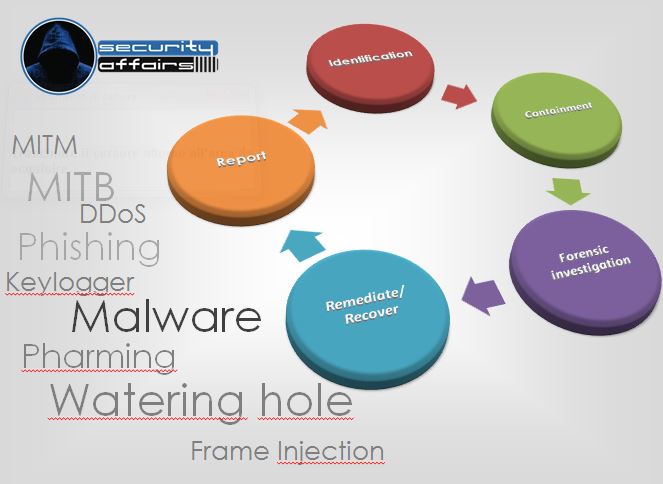 If you are among the 43 million Americans
planning to travel over the next days, you are most likely not leaving
your electronics behind. Make sure you secure your data before you hit
the road (or the air).
If you are among the 43 million Americans
planning to travel over the next days, you are most likely not leaving
your electronics behind. Make sure you secure your data before you hit
the road (or the air).It may be tempting to catch up on some work, get some holiday shopping done, or just surf the Web while sitting around the airport waiting for your flight. If you have a long list of to-do items to tackle, the hours spent travelling may seem like the perfect time to get started. It's really easy to misplace electronic devices on trips, and the last thing you want ruining your holiday is realizing that all those precious photos and important work files are lost.
Protect the Device
First of all, decide what you really need to take. The fewer devices you are carrying, the smaller the chances of losing or breaking them. Do you really need to take both your work laptop and your personal laptop? Perhaps you will be fine with just your smartphone and don't need to take both your iPad and the Kindle Fire.
Credant Technologies surveyed seven airports—Chicago, Denver, San Francisco, Miami, Orlando, Minneapolis-St. Paul, and Charlotte—back in 2012 and found over 8,000 lost devices. Of those lost devices, 43 percent were laptops, 45 percent were phones and tablets, and the remaining 12 percent were USB drives. Security checkpoints and restrooms were two common places where people left their items. Anecdotal evidence suggests under the seat and the seat pouches are, too.
Whatever you decide to take, make sure each one has some kind of a lock or password on it. This way, if you do lose it, someone can't just pick it up and gain access to all your data. If you have the new iPhone, turn on the fingerprint lock. For other phones, select an actual PIN or passcode instead of relying only on the "swipe to unlock" feature.
For your iPhones and Androids, be sure to take advantage of the anti-theft capabilities provided by Apple and Google respectively. iPhone users should enable iCloud services and familiarize themselves with Find My iPhone. Android users should likewise activate Android Device Manager and learn how to use it. Both of these services let you remotely track, lock, and wipe your mobile devices keeping you in control of your phone or tablet at all times.
Backup Your Data, Twice
Before you leave, take the time to back up all the files on the devices. That's ebooks, documents, pictures, videos, everything. This way, if you lose the device, you can reduce some of that angst because the precious data is backed up and just a few clicks away. This is also particularly useful if you are going to be going through customs since there's always the risk the officials may decide to confiscate your electronics.
Do it again before coming home. Back up those pictures you took and the files you created before you head out again. Upload those images and files to Flickr, Dropbox or any cloud storage service of your choice. You can copy the data onto a smart card or USB drive and put it in your checked luggage and hope the airline doesn't lose your entire bag. I personally like to drop the drive into a padded envelope and mail it home.
If you don't feel like using public cloud services, consider setting up your own personal cloud at home before you leave. You can copy data on to an external drive, such as Western Digital's My Cloud or even Transporter. This way, you can access the saved data remotely, and upload new files while you are still away. Android users should definitely look at our tips on how to backup your Android.
Beware of Public Networks
Beware of public networks, even if they aren't free. You may think you are hopping on to the hotel wireless, or the one belonging to the airport, but it may actually be a rogue network set up to trap unsuspecting users. Invest in a 3G/4G Internet dongle (I have one from Virgin Mobile) for mobile broadband, or take advantage of tethering to piggyback onto your smartphone's data plan. Make sure you put a password on your personal hotspot before tethering so that you don't have unknown visitors hopping on and listening in.
Earlier this month, Southwest Airlines announced it will offer gate-to-gate Wi-Fi, and lots of other airlines are expected to follow suit. At $8 per device for all-day in-flight Wi-Fi, it's not the cheapest offering out there, so I would suggest paying for the dongle instead. And remember, just because it's a paid wireless service doesn't preclude an unscrupulous person from eavesdropping on all the traffic flowing on the network. Don't decide to take care of your online banking just because you are on a paid network. If you don't know who else is on that network, it's not secure.
If you really need to use the unknown network, consider using a VPN service such as Editors' Choice CyberGhost VPN or VPNBook. iPhone users should be wary of connecting to any network that requires special configuration, as Skycure demonstrated. If you're on Android, consider using Hotspot Shield VPN to secure your browsing.
Safe travels, and may all your data be secure and backed up! That's something to be thankful for.





 It doesn't matter which Santa's list you're on
this holiday season. Cybercriminals want to leave a not-so sweet present
under the tree as they seek different ways to compromise consumers
during their shopping sprees.
It doesn't matter which Santa's list you're on
this holiday season. Cybercriminals want to leave a not-so sweet present
under the tree as they seek different ways to compromise consumers
during their shopping sprees. 





